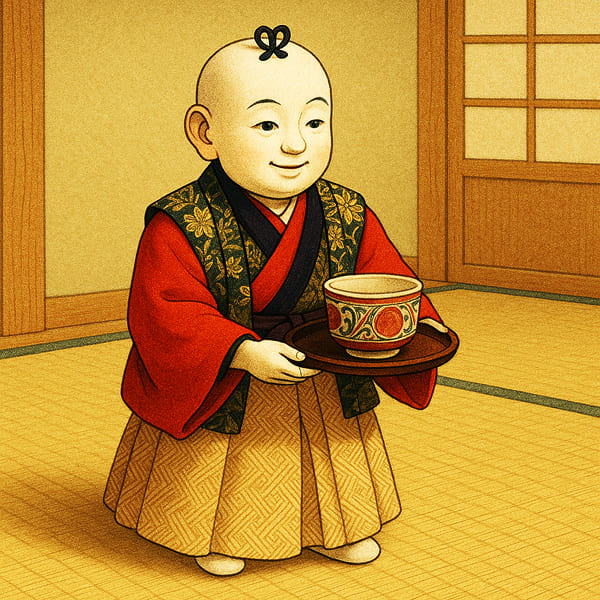Karakuri Ningyō: Japan’s Ingenious Mechanical Dolls That Inspired Modern Robotics

Contents
A doll pours tea. It bows. Then, without a word, it turns and glides away.
No wires. No electricity. Just centuries-old ingenuity at work.
Welcome to the world of Karakuri Ningyō—Japan’s traditional mechanical dolls that move with stunning elegance and surprising precision. Powered by wooden gears, springs, and hidden levers, they astonished audiences with lifelike motion. These marvels of Edo-period engineering once entertained emperors, delighted festival crowds, and even inspired the earliest Japanese robots.
Blending art, technology, and hospitality, Karakuri dolls are more than playful curiosities—they’re living symbols of Japan’s creative spirit.
Let’s take a closer look at how these extraordinary dolls came to be, how they move, and why they continue to fascinate people today.
The Historical Roots of Karakuri Ningyō
Karakuri Ningyō flourished during Japan’s Edo period (17th–19th century), when mechanical ingenuity and artistic performance merged to captivate audiences across all social classes. These dolls were both a form of sophisticated entertainment and spiritual expression. Whether serving tea, writing calligraphy, or performing music, they amazed viewers with seemingly magical, human-like motion—appearing in both elite households and public festivals.
The earliest detailed documentation of these mechanical marvels appears in the 1796 manual Karakuri Zui (Illustrated Machinery), which showcased their design and mechanisms. A key figure in their development was Hisashige Tanaka (1799–1881), a prodigious inventor who built dolls that could shoot arrows, write kanji, and serve tea. His innovations not only impressed the nobility of his time but also laid the groundwork for modern Japanese robotics.
Through the combined efforts of craftsmen, clockmakers, and performing artists, Karakuri Ningyō evolved into a symbol of Edo-period creativity, blending technology, hospitality, and aesthetics in uniquely Japanese ways.
Types of Karakuri Dolls and Their Mechanical Magic
There are three main types of Karakuri Ningyō, each showcasing different purposes and settings:
- Zashiki Karakuri (Parlor Dolls): These indoor dolls are best known for the tea-serving model. The doll approaches a guest with tea and returns on its own after the cup is lifted.
- Dashi Karakuri (Festival Float Dolls): Found in traditional Japanese festivals, these dolls are mounted on decorative floats. They perform mythological scenes or dances, delighting crowds during events like the Takayama or Inuyama Festivals.
- Shibai Karakuri (Theatrical Dolls): Used in stage performances, these dolls act out scenes with complex mechanical precision, mimicking human gestures and expressions.
All types rely on hand-crafted mechanisms, including cams, pulleys, and levers—highlighting the technical ingenuity of early Japanese inventors.
More Than Dolls: The Cultural Spirit of Karakuri
Karakuri Ningyō embody monozukuri—the Japanese spirit of craftsmanship—and omotenashi, or heartfelt hospitality. Craftsmen often hid the inner workings of these dolls to create an illusion of autonomous, magical movement, inviting viewers into a moment of surprise and wonder.
This philosophy of precision and care gave rise to more than just entertainment—it helped shape Japan’s global reputation for meticulous design, flawless engineering, and uncompromising quality. From watches and cameras to automobiles and electronics, the legacy of Karakuri can be seen in how Japan builds things: not just to function, but to delight and endure.
The minimalist, emotionally engaging motion of Karakuri has also influenced modern Japanese robotics. Engineers frequently cite these dolls as a source of inspiration when designing robots that blend technical functionality with human-like charm—an approach that continues to define Japan’s leading role in the robotics field.
Where to Experience Karakuri Ningyō Today
Today, Karakuri dolls can still be seen at exhibitions and festivals across Japan. These events offer a rare opportunity to witness the delicate artistry and engineering of traditional mechanical dolls in motion.
Here are some recommended places to experience Karakuri:
-
Inuyama City Karakuri Exhibition Center (Inuyama, Aichi Prefecture)
A permanent museum showcasing beautifully restored Karakuri dolls and their inner mechanisms. Visitors can see demonstrations and learn about the history and craftsmanship behind each piece.
You can learn more on the official website here: Inuyama City Karakuri Exhibition Center -
Inuyama Festival (Aichi Prefecture)
- Location: Inuyama City
- When: Early April
- Highlight: Elaborate floats (dashi) adorned with Karakuri dolls that perform atop the moving platforms. A UNESCO Intangible Cultural Heritage event.
-
Takayama Festival (Gifu Prefecture)
- Location: Takayama City
- When:
- Spring Festival: April 14–15
- Autumn Festival: October 9–10
- Highlight: Intricate Karakuri performances on exquisitely decorated floats. The city's old-town backdrop adds to the historical charm. Curious about what Takayama Spring Festival looked like? Check out the official event page with photos and updates here: View the 2025 Festival
If you plan to attend, be sure to check local event schedules and book accommodations in advance, as these festivals attract many visitors. Watching Karakuri Ningyō in their cultural context is a moving way to experience Japan’s living traditions.
These wooden performers may be silent, but they speak volumes about the ingenuity, artistry, and heart of a culture that finds beauty in precision and soul in motion.
Even in a digital age, Karakuri remind us that magic doesn’t always come from machines—it can come from craftsmanship passed down by hand, over centuries.